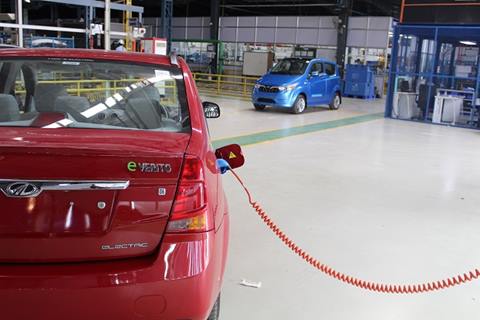
National Auto Policy draft released by Ministry of Heavy Industries suggests that government is considering to reduce GST and offer other benefits to cars that are compact (sub-4-meter in length) and have reduced carbon emissions. Currently, the carbon emission is reported at 155 g/km and the government hopes to bring it down to 110g/km by 2028.
In the proposed taxation framework, base GST rate for passenger cars will be unchanged at 28% but the GST cess rates will depend on vehicle length and CO2 emissions. The Ministry has proposed that all cars that are less than 4 meters in length and have lesser carbon emission will be charged only 1% additional cess. A vehicle with the length greater than 4 meters and CO2 emissions less than 155 g/km will have a GST cess rate of 15% and total GST rate of 43%.

The National Auto Policy also emphasis on the need to boost Research and Development (R&D) in the automobile industry. Government is looking to implement tax exemption on different levels of R&D expenditure done by automakers. It says that if a company’s R&D investment in over 2% of its turnover, the company should get 100% tax exemption, 150% if R&D investment is 2-4% of turnover, and – 250% if R&D investment is >4% of turnover.
The draft policy does not mention anything about Government’s earlier vision to achieve 100% electric mobility in India but does have a brief mention saying it will “Fast track comprehensive implementation of FAME scheme and align with the overall Electric Vehicle (EV) vision of the country.”
The government has also acknowledged that India is lagging behind countries like China, USA, Norway and the United Kingdom who have taken the lead in converting their vehicles fleets green and becoming engineering and production hubs for green mobility vehicles.
The National Auto Policy is silent on many fronts and is further going to add to the confusion on where should an OEM or an Auto Component manufacturer focus on. For years now, automakers have been asking for a comprehensive roadmap that will benefit both the government and the companies but is still a big missing piece.

The government further said that it will “roll out a comprehensive long-term (10-year) roadmap that will define the emission standards applicable after BSVI with a target of harmonizing with the most stringent global standards by 2028, across all vehicle segments. This roadmap will, in turn, enable the industry and support agencies to define the requirement of technologies, testing facilities, skill development and plan long-term investments.”
Automobile Industry in India also misses a separate ministry required and often has to deal with many stakeholders including Ministry of Heavy Industries, Ministry of Road Transport and Highways, Finance Ministry and now with GST Council and then ARAI, Green Tribunal, and many other government-appointed bodies. This has lead to unforeseen and abrupt changes in the industry. It is high time that government now adopts a more transparent and robust basis for major regulatory and policy changes which is backed by strong scientific analysis.





















